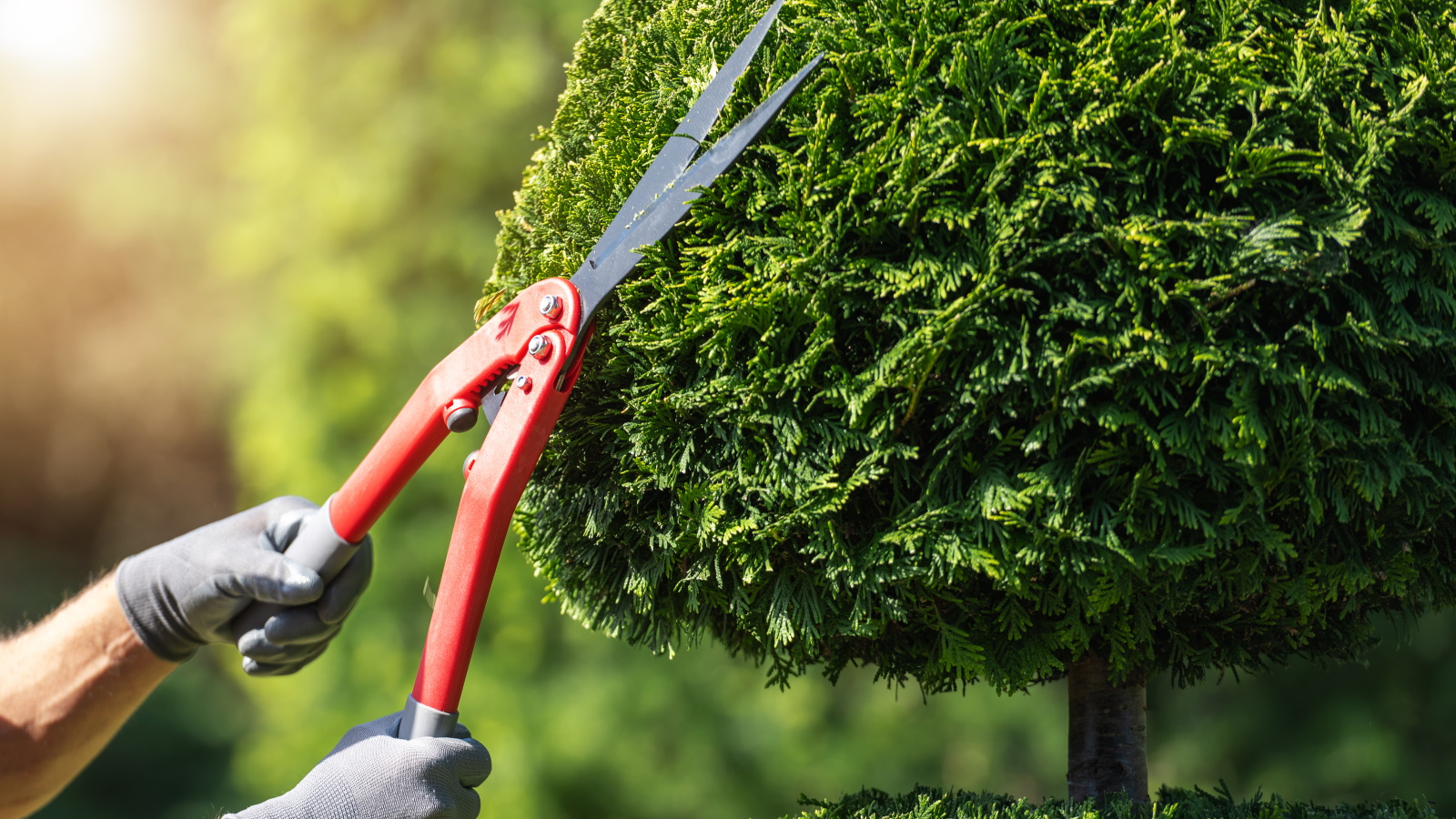If you dream of having a formal garden in your backyard, or perhaps you just want to add some playful character to your planting, you should consider including some topiary. Topiary is something of an art and it involves clipping plants into ornamental shapes – whether it's spheres, cones or something a bit more complex, you can really personalize topiary to your style. The first thing to know about topiary is that you can't just use any plant to achieve the look.
There are a range of best plants for topiary that you should choose from – these are plants that can be trained to maintain a shape and are easier to work with, plus it's best to go for evergreens that guarantee year-round interest. Once you have chosen which plants to work with for your topiary and you know what shape you want to achieve, you need to prepare to cut your topiary. However, it isn't as easy as going in with some loppers or shears - there is actually an optimal time of year to shape your topiary and a time of year to avoid.

Here's what experts say on the matter. When is the best time to cut topiary? There's a lot more to think about than just the shape when it comes to incorporating topiary in your yard and choosing to shape yours at the wrong time of year could negatively impact the health of your plants and their growth. Luckily, garden experts have revealed the best time of year to cut topiary and when to avoid doing it.
One of the biggest pruning mistakes is not getting the timing right, and that's the same for cutting topiary. Cutting back too much of a plant at the wrong time can hinder its ability to produce new growth. That's why experts say to only shape your topiary during the warmer months of the year.
'The best time to cut your topiary is late spring to early summer, around May or June,' says Marek Bowers , landscape design expert and founder of Bolder Green. 'This is when plants have started growing again after winter, but the new growth is soft enough to easily shape,' he explains. Of course, how easy your topiary is to work with at this point of the year will depend on the type of evergreen shrub you have opted for.
Popular choices include box, holly and privet. Topiary will grow out of shape as your plants produce new growth, so you might find you need to also give your topiary an occasional trim. 'You typically need to cut topiary two to three times during the growing season (between late spring and early fall),' says Marek.
'Simple shapes or slow-growing plants may only need trimming once or twice a year, while more intricate designs or fast-growers might require cuts every four to six weeks,' he adds. Marek is a sustainable landscaper and an expert on California and Colorado low-water rebates. Marek's website, Bolder Green, is a guide to eco-friendly gardening.
Through his articles on drought-tolerant landscaping and xeriscaping, readers will learn how to design stunning gardens that conserve water and support wildlife, all while adding beauty to their outdoor spaces. With the optimal window to cut topiary being between spring and summer, it's best to avoid trimming during colder seasons. 'You can do a light trim in late summer to tidy up the shape, but avoid heavy cutting as winter approaches to prevent damage from frost,' says Marek.
Cutting your topiary just before frost kicks in and can increase the chances of frost affecting the plant, as it becomes more exposed. 'If you cut it back at this time, you expose new growth to frost which could cause damage,' Marek explains. On the other hand, experts also say to avoid pruning topiary during particularly sunnier days in summer.
'Steer clear of pruning during very hot and dry summer days,' says Gerardo Loayza , landscape design expert and founder of BACQYARD. Doing so can cause stress to the plant and take away essential moisture. 'Make sure to also keep the soil moist during dry spells to keep the topiary looking bright and green,' says Gerardo.
'You can also apply a balanced fertilizer to evergreens in spring can help with growth,' he adds. Gerardo is the CEO and founder of landscape design company BACQYARD. He is a passionate landscape designer who offers outdoor designs at competitive prices.
These hedge shears have a steel blade and are ideal for a variety of pruning tasks like making hard-to-reach cuts, trimming flower stems, and maintaining your herb garden. Get the look of topiary without as much hassle with these trellis frames. Made from high-quality iron, these trellis frames are perfect for training climbing plants into a circular shape.
This planter takes on a classic urn silhouette with a turned pedestal base, bringing antique charm to your space. Perfect for styling formal topiary in your yard. FAQs The great thing about topiary is that you can personalize the shape and cut it however you wish.
However, if you're unsure where to get started, experts say it's best to strip it back to basics. 'Start with a simple shape and be patient with yourself,' says Marek Bowers , landscape design expert and founder of Bolder Green. 'Use sharp tools for clean cuts and trim in small sections to avoid mistakes.
'You should also regularly step back to check your work from different angles to make sure you're cutting symmetrically,' he adds. Topiary can be a beautiful addition to a winter garden , with frost glistening over the different shapes and adding sculptural interest to an otherwise dormant landscape. That's why the last time you should trim your topiary is in early fall long before frost hits, getting your plants in shape for winter and reducing the chance of frost damage.
.



















